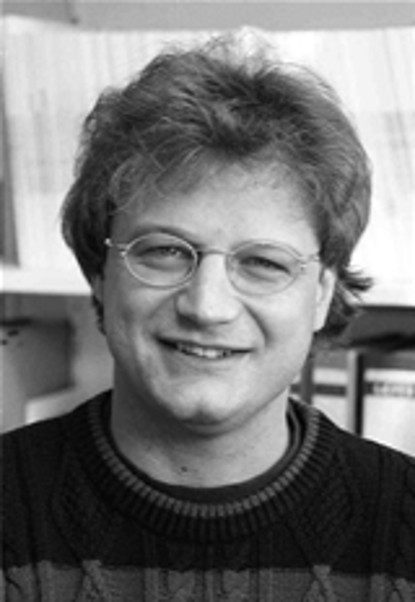LOEWE – Schwerpunkt (2011 – 2014)

SOFT CONTROL – Switching surface functionalities with stimuli responsive polymers
Prof. Dr. rer. nat. habil. Markus Biesalski
Speaker
TU Darmstadt
Fachbereich Chemie, Fachgebiet Makromolekulare Chemie & Papierchemie
Alarich-Weiss-Straße 4, 64287 Darmstadt, Tel +49 6151 / 16-2177, Fax +49 6151 / 16-2479
e-mail: biesalski@tu-…
Subproject A3: Nanostructured objects with helically chiral amphiphilic block-copolymers
Amphiphilic block-copolymers with functionalized and helically-chiral blocks should form higher organized aggregates suitable as asymmetric nano reactors for asymmetric catalysis. Based on our experience with helically chiral polymers (1) we decided to use polyacetylenes and polyisocyanides as chiral rigid-rod components. By implementation of photochromic groups in the side-chains the helical sense of the polymer may become photoresponsive which in turn may offer the opportunity to switch the configuration of the catalysis product.
[1a] N.-C. Meyer, A. Krupp, V. Schmidts, C. M. Thiele, M. Reggelin, “Polyacetylenes as Enantiodifferentiating Alignment Media”, Angew. Chem. Int. Ed. 2012, 51, 8334-8338. DOI: 10.1002/anie.201201891.
[1b] A. Krupp, M. Reggelin, “Phenylalanine-based polyarylacetylenes as enantiomer-differentiating alignment media”, Magn. Reson. Chem. 2012, 50, 45-52. DOI: 10.1002/mrc.3894.
[1c] L. Arnold, A. Marx, C. Thiele, M. Reggelin, “Polyguanidines as Chiral Orienting Media for Organic Compounds”, Chem. Eur. J. 2010, 16, 10342-10346. DOI: 10.1002/chem.201000940.
[1d] M. Reggelin, C. A. Müller, T. Hoffart, M. Holbach, “Pyridyl N-oxide substituted helically chiral poly(methacrylate)s in asymmetric organocatalysis”, Macromolecules 2005, 38, 5375-5380. DOI: 10.1021/ma0503357.
[1e] M. Reggelin, S. Dörr, M. Klußmann, M. Schultz, M. Holbach, “Helically chiral polymers: a class of ligands for asymmetric catalysis”, Proc. Natl. Acad. Sci. U.S.A. 2004, 101, 5461-5466. DOI: 10.1073/pnas.0307443101
[1f] M. Reggelin, M. Schultz, M. Holbach, “Helical chiral polymers without additional stereogenic units: a new class of ligands in asymmetric catalysis”, Angew. Chem., Int. Ed. 2002, 41, 1614-1617. DOI: 10.1002/1521-3773(20020503)41:9<1614::AID-ANIE1614>3.0.CO;2-5.



